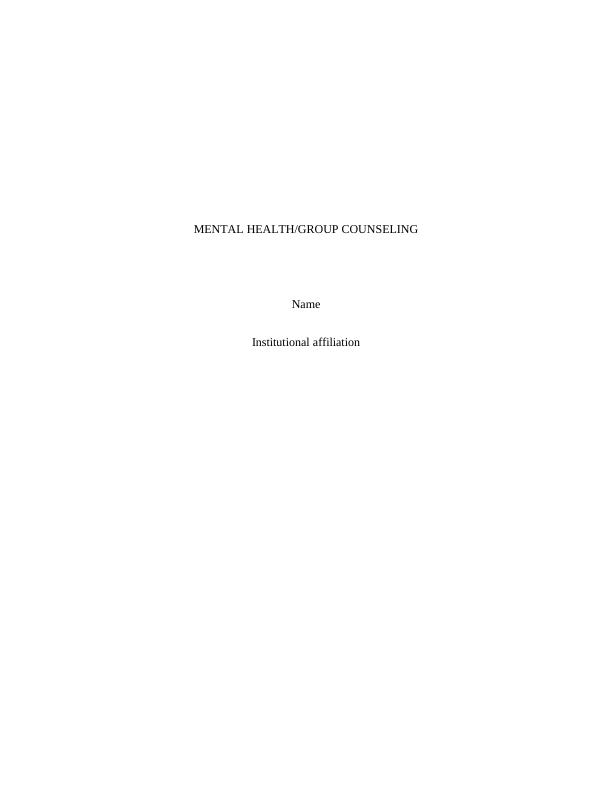(PDF) Group Counselling - Mental Health
Added on 2021-05-31
8 Pages2039 Words48 Views
MENTAL HEALTH/GROUP COUNSELINGNameInstitutional affiliation

Group Structure and Management/Traumatic Loss and bereavement in children whoexperienced a school shootingSummaryMany people are often exposed to dangerous situations of life, and these exposures have negativeimpact in the rest of their lives. When an action is delayed or not taken, the problem may becomeeven more hurting. This paper will discuss group formation goal and objectives, the requirementof group formation, the requirement in recruitment process, leadership and theoreticalperspective as well as ethical issues considerable in group counseling. Introduction Children are vulnerable members of society who require close attention given to them on daily basis. If a child suffers trauma or is bereaved they require someone to talk to them in order to help them avoid mental disorders associated with the kind of experience (Feldman & Reiff, 2014). This paper presents the formation of the group, the objective of the group, leadership and ethical issues to be considered when administering therapeutic services in a group setting. 1.Group goal and objectives General statement of the desired outcome for group membersPast experiences have either positive or negative effects on how an individual will live, view the world and connect different situations in life. If children are exposed to trauma or shocks of life they may develop a fear of the unknown and also be affected emotionally. Measurable group objectives

Build an emotional sketch on the deceased loved onesPlan of memorial services for monthly anniversary Be able to share traumatic details with therapist/counselorsTry and get through a week without crying2.Group format Group size would be determined by the variables such as group performance, conformity andconsensus, member performance, the nature of the interaction, distribution of participation,group organization, and member satisfaction. In this case, where there is a need to take care oftraumatized children, a close attention is required for every child in order to meet their needs andsatisfy them hence a small sized group is required (Feldman & Reiff, 2014). This is becauselarge groups perform less than small groups. In this case, the closed group membership will be applicable where no new member will beaccepted to avoid recurring of issues unless where the old members are about to exit the group.The following reason justifies why the closed group will be more applicable to managingchildren traumatic conditions (Feldman & Reiff, 2014). The group has consistency andpredictability; it requires more cohesiveness and intimacy between the counselee and thecounselor and the members of the group need easier and immediate balance of their needs(Gonzalez, M. T., Hartig, T., Patil, G. G., Martinsen, E. W., & Kirkevold, M. (2011). This groupis able to perform its tasks on a weekly basis in 1-2 hours counseling, making it inappropriate fornew members to join the group after week three of any group (Northouse, 2018). This groupoffers a good opportunity to be trusted, learn and work through issues of termination, separation,and inclusion feeling safe in that closed environment.

End of preview
Want to access all the pages? Upload your documents or become a member.
Related Documents
Research Identity on Traumatic Loss and Grief Counseling for Childrenlg...
|5
|796
|115
Confidentiality as an Ethical Dilemmalg...
|18
|4968
|357
Intergenerational Trauma and Its Effects on Indigenous Australianslg...
|9
|2074
|188
